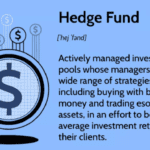Dividend Investing: How to Earn Passive Income from Stocks
Dividend investing is one of the most reliable ways to generate passive income from the stock market. Investing in dividend-paying stocks can build a portfolio that provides consistent cash flow while benefiting from long-term capital appreciation. In this guide, we’ll explore how dividend investing works, its benefits, and risks, and how to build a solid dividend portfolio.
What is Dividend Investing?
Dividend investing is a strategy where investors buy stocks of companies that regularly distribute a portion of their profits to shareholders in the form of dividends. These payments can be received quarterly, semi-annually, or annually, providing a steady stream of passive income.
Types of Dividends:
-
Cash Dividends – The most common form, where companies pay shareholders a set amount per share in cash.
-
Stock Dividends – Instead of cash, investors receive additional shares of the company.
-
Special Dividends – One-time payments made when a company has excess profits.
Benefits of Dividend Investing
✅ Passive Income Stream – Earn consistent cash flow without actively working.
✅ Compounding Growth – Reinvesting dividends can accelerate portfolio growth.
✅ Stability – Dividend stocks tend to be less volatile than growth stocks.
✅ Hedge Against Inflation – Many companies increase dividends over time, preserving purchasing power.
✅ Downside Protection – Companies with strong dividend histories often perform better during market downturns.
How to Start Dividend Investing
1. Choose Strong Dividend Stocks
Not all dividend stocks are equal. Look for companies with:
-
Consistent Dividend Payments – Companies with a history of increasing dividends (Dividend Aristocrats & Dividend Kings).
-
Sustainable Payout Ratios – A payout ratio (dividends/earnings) below 60% is generally considered safe.
-
Strong Financials – Look for stable revenue, profit growth, and low debt levels.
-
Competitive Advantage – Companies with strong brand recognition and market dominance.
📌 Example of Strong Dividend Stocks:
-
Johnson & Johnson (JNJ)
-
Procter & Gamble (PG)
-
Coca-Cola (KO)
-
Microsoft (MSFT)
-
McDonald’s (MCD)
2. Diversify Your Portfolio
To reduce risk, invest across different sectors such as:
-
Consumer Staples (e.g., Pepsi, Unilever)
-
Technology (e.g., Microsoft, Apple)
-
Healthcare (e.g., Pfizer, Johnson & Johnson)
-
Utilities (e.g., Duke Energy)
-
Financials (e.g., JPMorgan, Bank of America)
3. Consider Dividend ETFs
If you don’t want to pick individual stocks, Dividend ETFs offer diversification. Some top choices include:
-
Vanguard Dividend Appreciation ETF (VIG)
-
SPDR S&P Dividend ETF (SDY)
-
Schwab U.S. Dividend Equity ETF (SCHD)
4. Reinvest Dividends for Compound Growth
Using a Dividend Reinvestment Plan (DRIP) allows you to automatically reinvest dividends to buy more shares. This leads to exponential growth over time.
Example:
-
Invest $10,000 in a stock with a 4% dividend yield.
-
Reinvest all dividends.
-
Over 20 years, your investment could double or triple with compounding.
5. Monitor and Adjust Your Portfolio
-
Check Dividend Yields & Growth Rates – A sudden drop in dividends may signal trouble.
-
Stay Updated on Company Performance – If a company struggles financially, reconsider holding its stock.
-
Rebalance Annually – Ensure your portfolio remains diversified.
Risks of Dividend Investing
⚠️ Dividend Cuts – Companies may reduce or eliminate dividends during financial struggles.
⚠️ Market Volatility – Even strong dividend stocks can decline in price.
⚠️ Over-Reliance on Dividends – Relying solely on dividends without capital appreciation may limit long-term gains.
⚠️ Tax Implications – Dividends may be taxed differently based on your location and tax bracket.
Final Thoughts
Dividend investing is a powerful way to build wealth and generate passive income over time. By choosing strong dividend-paying companies, diversifying your portfolio, and reinvesting dividends, you can create a reliable income stream while benefiting from stock market growth.




